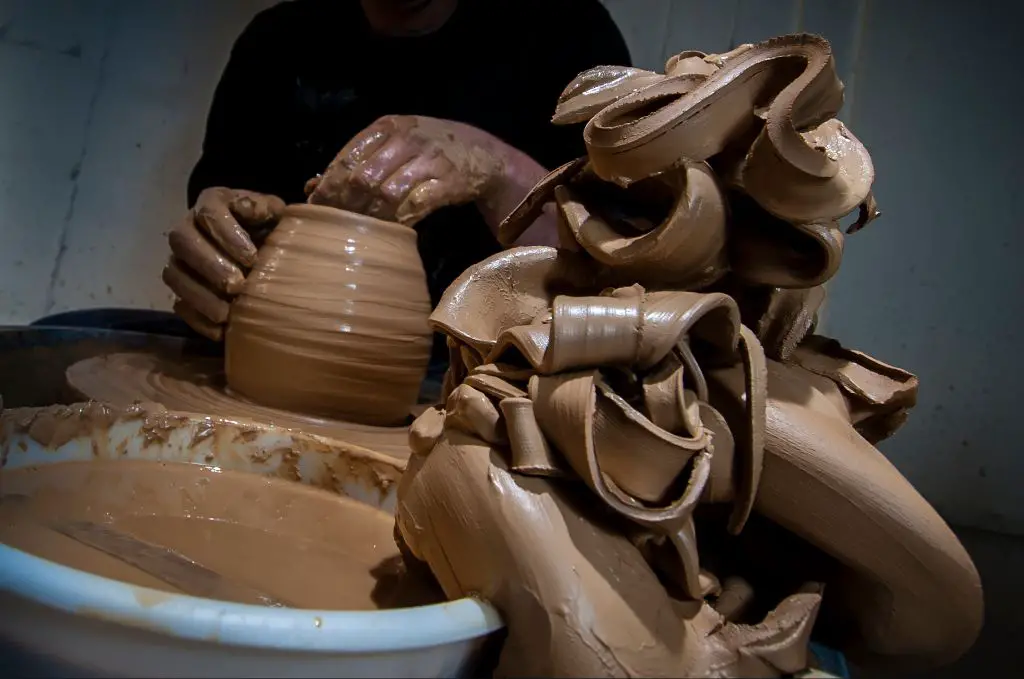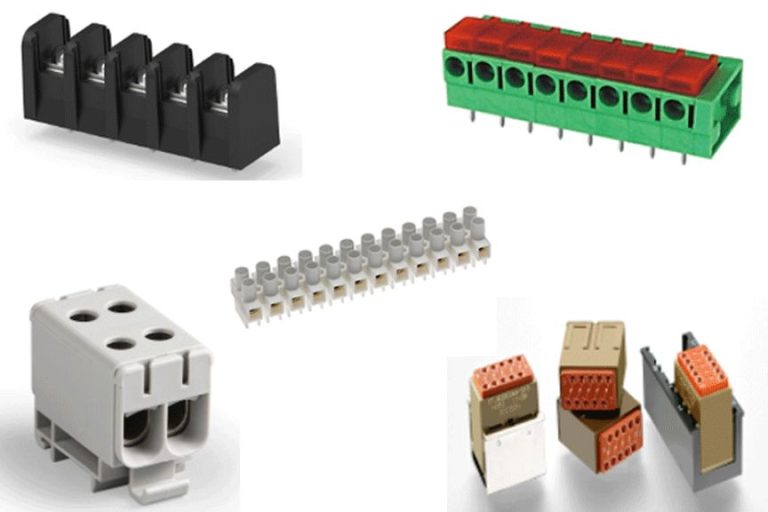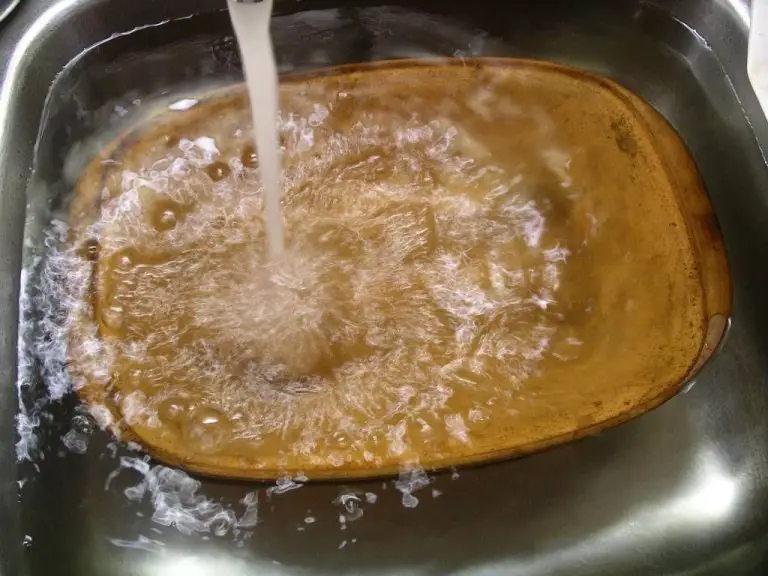Clay For Every Project: Understanding Different Types
Ceramics, pottery, sculpture and 3D art are arts that have relied on clay as an essential medium for thousands of years. Clay is a versatile material that allows artists and crafters to easily shape it into endless creations. Understanding the different types of clays available can help match the appropriate clay to your project.
In this article we will provide an overview of the most common types of clays used for arts and crafts. We will cover the characteristics, uses, and benefits of earthenware, stoneware, porcelain, modeling, pottery, sculpture, and air-dry clays. Whether you are new to working with clay or looking to expand your knowledge, this guide will help you select the right clay for your needs.
Clay Basics
Clay is a type of fine-grained natural soil material containing minerals such as aluminum silicates, magnesium silicates, and iron silicates. As defined in Chapter 13 art appreciation Flashcards, clay comes from soil with a heavily volcanic makeup mixed with water.
According to Dr. Darrin Lew, clay’s composition gives it plasticity when mixed with water, allowing it to be molded into various shapes. The clay retains its shape after drying or firing.
The primary uses of clay are for making pottery, ceramics, sculptures, and bricks.
Earthenware Clay
Earthenware clay is one of the most common types of pottery clay. Earthenware clays are typically fired at lower temperatures, between 1,800°F – 2,000°F. Due to the lower firing temperature, earthenware retains its natural porosity and is less dense and durable than stoneware or porcelain (Soul Ceramics).
The key properties of earthenware clay include:
- Porous
- Brittle
- Absorbs water
- Fires at lower temperatures (up to 2,000°F)
- Comes in natural earthen colors like red, brown, buff, white
Earthenware has a wide range of uses, from pottery and ceramics to bricks and architectural products. Common earthenware items include flower pots, dishes, mugs, tiles, and figurines. The porosity makes it suitable for purposes where breathability is desired. However, it requires glazing to make it watertight for holding liquids (Pottery Help).
Stoneware Clay
Stoneware is a vitrified or semivitrified clay body that becomes nonabsorbent when fired (PotteryCrafters, 2023). It is typically fired between 2200°F and 2400°F. Stoneware clays are often utilized for functional purposes like dishware and mugs due to their durability and ability to hold liquid (ThePotteryWheel, 2021).
Stoneware clays are mined from feldspar-rich deposits and are usually made primarily of ball clay and/or kaolin (ThePotteryWheel, 2021). They generally contain small amounts of feldspar, silica, and other fluxes that lower the vitrification temperature (Quora, 2016). The addition of fluxes causes the clay to melt and become water-resistant during the firing process.
Stoneware’s properties make it ideal for a variety of ceramics applications, especially for items intended for daily use. It is a very strong clay body when fired to maturity, making it durable and resistant to scratching and breaking. The semivitrification allows stoneware to be watertight so it won’t absorb liquid. It also has excellent thermal shock resistance, allowing stoneware pieces to go from freezer to oven without cracking (PotteryCrafters, 2023).
Porcelain Clay
Porcelain clay is a fine clay made from the combination of kaolin, quartz, and feldspar fired to a high temperature [1]. It is known for its white color and translucency after firing. Porcelain has high plasticity and strength when fired at high temperatures around 2,300-2,600°F (1,260-1,430°C), typically to cone 10-11 [2].
The main properties of porcelain clay are its whiteness, strength, hardness and translucency. It has very low porosity making it an excellent material for tableware and other objects where high strength and low water absorption are desirable. Porcelain also resists staining and is easy to clean.
Due to its high firing temperature and vitrification, porcelain clay is commonly used for pottery, tableware, sanitaryware and decorative objects. It can be molded into complex shapes and retains crisp details. The lack of pores allows decorative techniques like printing and painting directly on the unfired clay.
For firing porcelain clay, electric kilns capable of reaching over 2,300°F are required, as well as special glazes fit for high temperatures. Firing to the right cone is important to achieve vitrification without warping or bloating the clay.
Modeling Clay
Modeling clay is a malleable clay that hardens when it dries. It typically contains clay, water to keep it workable, and oil to prevent it from drying out. Some key properties of modeling clay include:
- It can be shaped, molded, and sculpted when wet or moist.
- It air dries naturally, hardening as the water evaporates.
- When dry, it holds its shape.
- It does not require firing in a kiln like ceramic clays.
Modeling clay has a variety of uses. It is commonly used for arts and crafts, allowing creating of sculptures, jewelry, pottery, and more. For example, modeling clay can be used for (Difference Wiki):
- Creating drafts or models for larger sculpting projects.
- Educational purposes for children to learn sculpting.
- Stop-motion animation figures.
It also has uses in science labs, such as adhering to glassware to create temporary seals or containers (Some Uses for Modeling Clay). Overall, modeling clay is valued for its malleable and air-drying properties that allow for diverse creative applications.
Pottery Clay
Pottery clay is clay that is specifically formulated for constructing pottery and ceramic ware. The two main categories of pottery clay are earthenware and stoneware. Earthenware clay is porous, soft, and fragile when fired. It can be fired at lower temperatures. Common types of earthenware pottery clay include red clay and terra cotta. Stoneware clay is denser and more durable than earthenware. It requires higher firing temperatures. The best types of pottery clay for handbuilding are earthenware clays like red clay. They are soft and smooth which makes them easy to mold and shape by hand. Stoneware clays can also be used but may require more effort as they are less pliable.
For throwing on the pottery wheel, stoneware clays are generally preferred over earthenware. Stoneware clays like porcelain and white stoneware have higher plasticity which makes them easier to center and shape on the wheel. Some specific stoneware clay bodies well-suited for throwing include speckled buff, soldate 60, and laguna B-Mix. These clays have good wheel-throwing properties like high plasticity and low moisture content. Earthenware clays can be used for throwing but some may be too fragile, porous, or prone to cracking. Overall, stoneware offers the best properties for both functional ware and artistic expression when throwing on the wheel.
Sculpture Clay

Sculpture clay is specially formulated for sculpting and molding figures, shapes and objects. The best types for sculpting are oil-based clays that don’t dry out and remain workable for long periods.
Polymer clays like Sculpey and Fimo are popular for sculpture. They can be shaped easily, hold fine detail, and harden when baked in a regular oven. These clays come in a wide array of colors that can be blended and layered for custom effects. Polymer clays don’t shrink or crack when baked.
Plasteline and plasticine are non-hardening, oil-based clays used by professionals for sculpture and animation. They provide superior sculpting properties and never completely dry out. Since these clays remain soft indefinitely, sculptures must be supported by an armature or cast into another material. According to Clay Sculpture | Gallery posted by Brianhuntress, famous artists like Auguste Rodin used plasteline for clay sculpture.
Water-based clays can also be used for sculpture. Pottery clay requires more skill as it must be kept moist during the sculpting process. Once shaped, pottery clay sculptures must be fired in a kiln. Some clays like earthenware and stoneware are better suited than others for intricate sculpture.
Air-Dry Clay
Air-dry clay is a type of modeling clay that cures and hardens as it dries through evaporation. It is one of the most accessible and easy-to-use clays for crafters and hobbyists. Here are some of its key properties and uses:
Properties:
- Made from a non-toxic base such as cellulose, flour, or cornstarch mixed with minerals
- Dries and hardens at room temperature as the water evaporates
- Available in white or gray, can be colored with paints or inks
- Smooth, lightweight texture
- Does not require firing in a kiln
Uses:
- Kid-friendly modeling and crafting projects
- Model making, miniatures, and clay sculptures
- Jewelry making, beads, pendants, and decorative items
- Holiday ornaments, figurines, dolls, and decorations
- Can be painted, glazed, or sealed once dry for decorative effects
Pros:
- Very easy to use, requires no special skills or tools
- Quick drying time compared to other clays
- Lightweight and less messy
- Low cost and readily available
- Doesn’t require a kiln for curing
Cons:
- Less strong and durable than baked or fired clays
- Pieces may be brittle or prone to chipping if very thin
- Limited working time before drying begins
- Surface can’t be smoothed or blended like moist clay
- Has shrinkage as it dries that can cause cracks
Conclusion
In summary, there are many types of clay available for different arts and crafts projects. Earthenware, stoneware, porcelain, modeling, pottery, sculpture, and air-dry clays all have unique properties that make them suitable for certain applications. When choosing a clay, it’s important to consider the project requirements, firing needs, color and texture preferences. For beginners, polymer and air-dry clays are easiest to work with. More advanced ceramic artists may prefer stoneware or porcelain for durability and high-fire uses.
To recap, earthenware is porous, inexpensive and low-fire. Stoneware is less porous, durable and mid-range firing. Porcelain is non-porous, translucent and high-fire. Modeling clays are oil-based and never harden. Pottery clays are earthenware blends for handbuilding and wheelwork. Sculpture clays are available in earthenware and stoneware for sculpting strength. Lastly, air-dry clays are polymer-based, require no kiln firing and are great for crafting and kids’ projects.
When selecting a clay, consider your skill level, project goals, firing capabilities, colors and textures needed. With an understanding of the different properties of clays, both novice and expert ceramic artists can choose the right material for their creations.


